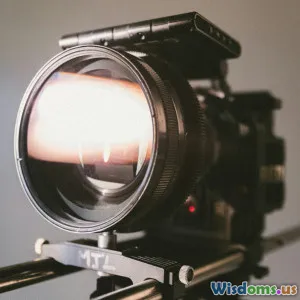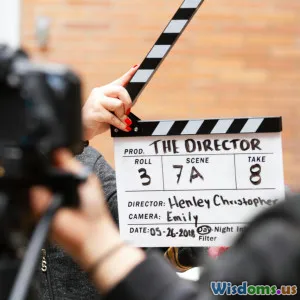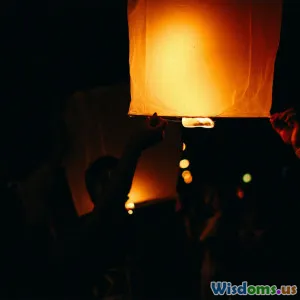
The Future of Photography and Filmmaking Technology
6 min read Explore the evolving landscape of photography and filmmaking technology, uncovering trends that will shape the future of visual storytelling. (0 Reviews)
The Future of Photography and Filmmaking Technology
The landscape of photography and filmmaking is undergoing a transformative evolution, influenced by rapid advancements in technology. This article delves into the emerging trends that promise to reshape how we capture, edit, and share visual stories.
AI and Machine Learning in Visual Arts
Artificial Intelligence (AI) is making waves in the photography and filmmaking industries. With machine learning algorithms capable of analyzing vast datasets, AI can automate tedious tasks like image editing and color correction. Tools like Adobe Photoshop’s AI features, such as Content-Aware Fill, allow photographers to enhance their images with minimal effort.
Moreover, AI-driven video editing software can analyze footage and suggest edits, making it easier for filmmakers to produce polished content quickly. This technology not only saves time but also opens up creative possibilities by allowing artists to focus on storytelling rather than technical details.
Example: Adobe Sensei
Adobe Sensei is a prime example of how AI is being integrated into creative workflows. It enhances user experience by automating repetitive tasks, thereby streamlining the creative process. As AI continues to evolve, we can expect even more sophisticated tools that will redefine the boundaries of creativity in photography and filmmaking.
Virtual Reality and Augmented Reality
Virtual Reality (VR) and Augmented Reality (AR) are changing the way audiences experience visual content. Filmmakers are exploring VR storytelling to create immersive experiences that engage viewers on a deeper level. Imagine stepping into a scene from your favorite film, where you can interact with characters and environments.
On the other hand, AR is being utilized in photography to bring static images to life. Apps that overlay digital content onto real-world images provide an innovative way for photographers to enhance their storytelling. As these technologies become more accessible, we can anticipate a surge of creative applications in both fields.
Example: Jaunt VR
Jaunt VR is a pioneer in creating immersive VR experiences for filmmakers. By utilizing 360-degree cameras and advanced editing software, they enable creators to transport viewers into their narratives, fostering a new realm of storytelling.
The Rise of 8K and Beyond
As technology advances, so does the quality of visual content. The introduction of 8K resolution cameras is pushing the boundaries of what’s possible in photography and filmmaking. With four times the resolution of 4K, 8K offers unparalleled detail and clarity, making it an exciting option for high-end productions.
For photographers, the ability to capture images in such high resolution allows for greater cropping flexibility and detail retention, while filmmakers can produce stunning visuals that captivate audiences.
Example: RED Digital Cinema
RED Digital Cinema has been at the forefront of high-resolution cameras, providing filmmakers with tools to create breathtaking visuals. Their 8K cameras are already being used in major film productions, setting a new standard in the industry.
The Impact of Social Media and Mobile Technology
Social media platforms have dramatically changed how photography and filmmaking are consumed and shared. The demand for high-quality content on platforms like Instagram, TikTok, and YouTube has paved the way for mobile technology to flourish. Smartphone cameras are now equipped with advanced features that rival traditional DSLRs, making photography more accessible than ever.
Content creators are leveraging these platforms to tell their stories, leading to a rise in user-generated content. This shift is not just a trend; it signifies a change in how we perceive and appreciate visual arts.
Example: TikTok and Instagram Reels
Social media giants like TikTok and Instagram have revolutionized content consumption. With features that encourage creative storytelling through short videos, these platforms are fostering a new generation of filmmakers and photographers who utilize their smartphones to capture and share their visions.
Conclusion
The future of photography and filmmaking technology is bright, with innovations like AI, VR, AR, and high-resolution cameras leading the charge. As these technologies continue to evolve, they will empower creators to push the limits of their craft, transforming visual storytelling in exciting ways. By staying informed and adaptable, photographers and filmmakers can harness these advancements to elevate their work and engage audiences in new, meaningful ways.
Rate the Post
User Reviews
Popular Posts





















